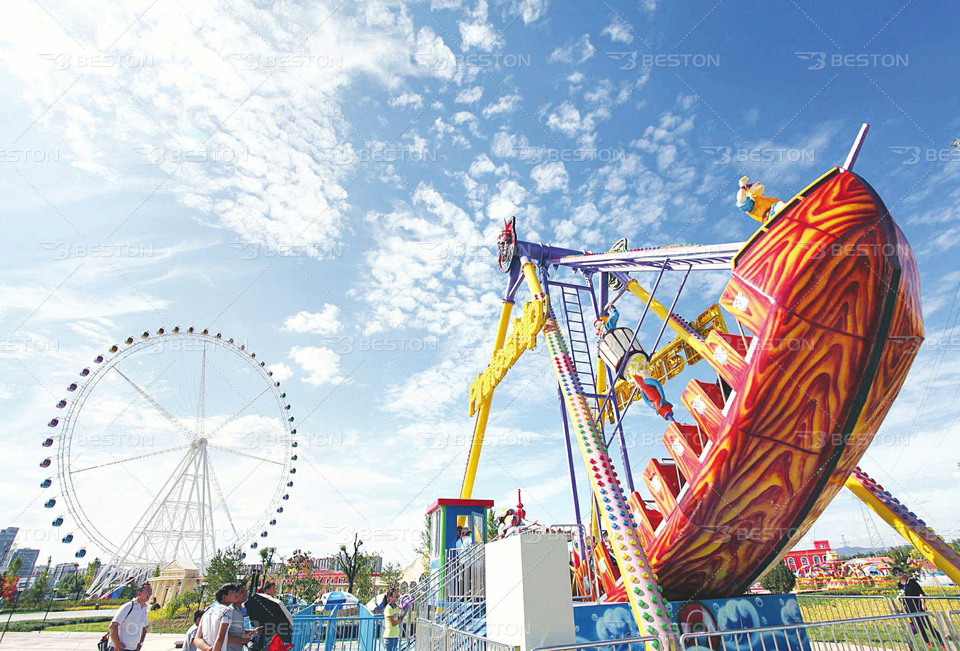Amusement parks rely heavily on dynamic attractions to maintain relevance and profitability in an increasingly competitive market. Among these, thrill rides stand as the most powerful instruments for driving consistent visitor flow. Their towering structures, visceral sensations, and kinetic energy contribute to both emotional impact and market visibility. For park operators seeking increased attendance, the addition or enhancement of thrill rides is not merely a feature—it is a strategic necessity.
The psychology behind thrill ride appeal is deeply rooted in human behavior. Adrenaline-seeking individuals, particularly in the youth demographic, are naturally drawn to high-speed, high-altitude, or high-intensity experiences. Rides that incorporate rapid motion, inversion, freefall, or centrifugal force trigger biological responses such as increased heart rate and endorphin release, reinforcing the desire to repeat the experience. These sensations, when paired with social validation and visual spectacle, create enduring memories that encourage return visits.
Visual Dominance and Brand Differentiation
Thrill rides, by their very design, command attention. A towering roller coaster with visible drops and loops becomes a landmark structure. Visitors are often drawn to parks specifically for one or two standout rides that dominate advertisements and aerial views. These large-scale attractions give the park an identifiable skyline and differentiate it from regional competitors.
Beyond height, sound design also plays a role. The audible clicks of chain lifts, the roar of a train descending a steep hill, or the rhythmic swoosh of a fair swing ride in motion add layers of anticipation. These sounds function as ambient marketing, luring passersby and reinforcing the sensation-based identity of the park.
A high-impact ride can also serve as a centerpiece for events and promotional campaigns. Launches of new rides are frequently paired with influencer visits, media coverage, and themed festivals, all of which magnify public attention. In this context, a strategic partnership with an amusement park ride manufacturer ensures custom engineering, aesthetic alignment, and operational efficiency—critical factors for long-term visitor attraction.
Repeat Visits Through High-Intensity Experiences
Thrill rides encourage not only initial visits but also repeat attendance. Each experience is unique, influenced by seating position, time of day, weather conditions, and psychological readiness. This variability makes guests more likely to revisit in search of a more intense or different experience. In parks with a variety of thrill-based attractions, guests may plan multi-day visits to experience all the available options.
For many amusement parks, the presence of a high-profile coaster becomes the main reason guests choose to buy a roller coaster ticket bundle or season pass, allowing unlimited access. These sales models increase cash flow stability and foster customer loyalty. Parks that continually rotate or update their ride offerings keep the experience fresh, giving former visitors a reason to return.
Additionally, thrill rides often influence group dynamics. One enthusiastic rider can influence a group of peers or family members to participate or attend. The contagious excitement amplifies word-of-mouth marketing, which remains one of the most effective tools for drawing new customers.

Expanding Appeal Across Age Segments
While thrill rides are traditionally marketed to teens and young adults, their audience has expanded. Parks now offer a spectrum of intensity, from gentler launch coasters to hybrid models that blend storytelling with motion. Families and older guests increasingly seek out shared thrill experiences that provide excitement without discomfort. The fair swing ride, for example, offers panoramic views and smooth motion, making it an attractive option for a broad range of visitors.
Heightened inclusivity doesn’t just affect ticket sales—it impacts the perceived accessibility of the park itself. When more visitors find at least one thrill attraction suitable to their preference, overall satisfaction rises. Parks that design for a wider range of fear thresholds and physical abilities create environments where mixed-age groups can stay longer and spend more.
The expansion of mid-intensity thrill rides also allows for smart spatial planning. Smaller or vertical rides can be installed in tight areas of the park without sacrificing impact. This results in better guest flow management and increased activation of underused park sections.

Strategic Placement and Ride Clustering
Placing thrill rides strategically within the park layout helps distribute visitors more evenly, reducing bottlenecks and improving crowd control. A pirate boat ride installed near the entrance can attract immediate attention, while a coaster at the rear draws guests deeper into the venue. This flow maximization supports surrounding amenities—food courts, retail outlets, rest zones—and increases per-capita spending.
Ride clustering is another effective strategy. By grouping thrill rides in a designated “extreme zone,” operators can create thematic environments that cater specifically to adrenaline-focused guests. This not only simplifies navigation but also strengthens branding and targeted promotions. Seasonal events like “thrill nights” or “adrenaline festivals” can be hosted in these zones to intensify attendance during off-peak periods.
In such setups, integrating a pirate boat ride enhances the thematic appeal and offers a rhythmic, wave-like experience that complements more jarring thrill rides. Its high visibility and distinctive swinging arc also serve as visual lures from distant parts of the park.

Data-Driven Design and Performance Monitoring
Modern thrill rides are increasingly equipped with IoT sensors, telemetry systems, and ride analytics dashboards. These tools offer real-time performance data—load times, queue lengths, ride cycles, and mechanical status—which allows operators to make informed decisions about maintenance, staffing, and guest traffic management.
Analyzing rider behavior also supports marketing strategy. Data on which rides have the highest repeat usage or longest wait times informs future investment. When a thrill ride consistently drives up attendance and revenue, the justification for expansion or a second unit becomes clear. Customizations based on visitor data—adjustable ride intensity, onboard audio, synchronized lighting—can further enhance the guest experience.
Enhancing Competitive Positioning
In regions where multiple parks compete for similar audiences, thrill rides often determine competitive advantage. The installation of a record-breaking drop tower or a world-first coaster feature can shift public attention dramatically. Parks that position themselves as thrill ride pioneers attract not only tourists but also media coverage and industry recognition.
Thrill rides offer operational scalability, too. Off-peak performance can be maintained through promotional events or limited-time ride modifications. Themed overlays, such as horror experiences or light shows, give existing rides new life and renewed commercial potential.
Ultimately, thrill rides are not mere additions—they are transformative assets. They shape park identity, influence guest behavior, and generate consistent foot traffic across seasons. Through thoughtful integration and continuous innovation, they remain central to the sustained success of modern amusement parks.
